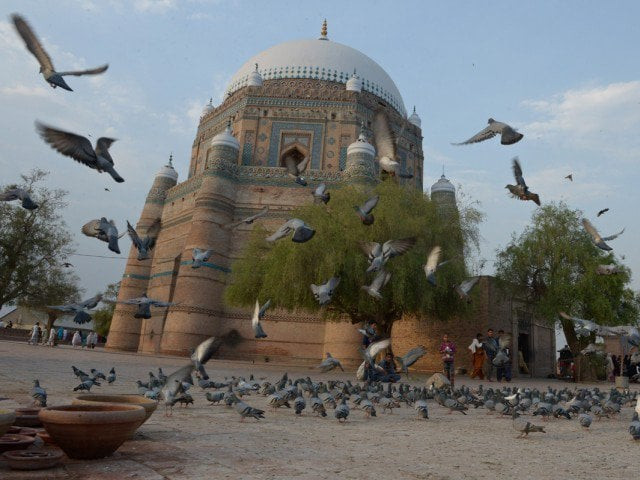For centuries, Multan has stayed true to its reputation as the land of graveyards and beggars, heat and dust. Despite the sprawling mango orchards across the district, the terrain retains a semi-arid feel, a situation that only promises to get worse in the face of looming water scarcity and unscientific crop management. If tree cover in the country, in general, is significantly less than ideal, it is critically low in the Upper Indus Plain comprising southern Punjab.
For decades, Pakistan’s ruling elite have favoured one mode of development above all else; build roads and prosperity will follow. From local politicians to national leaders, everybody touts building a road as having done something for the nation. The questionable rationale of this developmental priority and the many valid criticisms levelled against it notwithstanding, one pernicious aspect of it has largely been ignored in the national conversation on the subject: road-building fever is wreaking havoc with tree cover in places where the media glare is weak and the civil society not sufficiently vocal or conscious. In Punjab, and for a host of factors, this would mean almost every place other than Lahore.
As already stated, Multan was never a green city to begin with. However, its urban precincts were never really as barren as they have been since the flyover frenzy of the previous government and the ambitious metro project by the incumbent one. Before these developments, one did find trees lining the roadside. Bosan Road, a major north-side artery bisecting the city, used to be a boulevard before the Metro was built on top of it. Now the mildest breeze has the city bathed in dust. Any significant new plantation initiatives are entirely missing.
With the number of public parks in the city being negligible for an estimated two million people, the only really tall, old and shady trees one can find are either in private compounds or the military cantonment. Public institutes of health and education do have vegetation but invariably in the form of the useless Safeda (the Eucalyptus). In decades past, Safeda plantation was favoured in cities on account of its fast growth to a considerable height. True to form, no attention was paid to scientific fact in this policy. The Safeda provides minimal protection against the summer sun, does not produce large amounts of oxygen through photosynthesis, and worst of all, is a water-guzzler in a water-scarce country.
The situation is no better in rural areas where motorway and other road projects are currently underway. The road project linking the Multan-Sukkur Motorway to the Multan Dera Ghazi Khan highway has ripped through prime mango orchards. The old Multan Shujabad road is being broadened in the name of a late political grandee from Shujabad whose scions are presently thick with the ruling party. There is a three kilometre stretch on this road that used to be completely roofed with a canopy of majestic old shisham (Indian Rosewood) and pipal (Sacred Fig) trees. Driving beneath that dense green cover would make you forget for a brief moment that you were travelling through water-starved, sun-burnt countryside. Without a thought spared to the ages it takes for shisham or pipal to attain full maturity, the entire stretch of these grand old trees was chopped down to make room for still more gravel, asphalt and tarmac.
Compound the above with thousands of acres of orchards lost to private housing projects and the picture gets even bleaker. At this point, the reader may ask why the government’s road projects are the sole object of this article’s censure when private sector development is even more callous with the environment. The simple answer is that while profit is the declared driving-force of the private sector, the government has an absolute duty, in theory, towards the larger good of society, in the present and the future. Erratic weather patterns, worsening temperature extremes, abrupt harvest-destroying dust-storms, and the catastrophic role of deforestation in the flood devastation of 2010, should serve to awaken both society and government to the environmental imperative.
Pakistan’s developmental goals have always been beleaguered by the desire to become like Europe and America. We tend to forget though that the slash-and-burn tactics of colonialism and economic imperialism through which the west acquired its glitzy wealth are completely environmentally unsustainable in the present day. Today, the overarching concern is whether our destructive consumption of natural resources will make the planet uninhabitable for posterity. Therefore, development must be tempered with scientific rationality and the government, with all its powers of regulatory control, must take the lead. Failing that, the affluent of the future will drive down smooth roads and purchase oxygen while the masses will suffer the full brunt of a treeless environment, gasping for clean air, roasting in the sun, and still awaiting the prosperity roads were supposed to bring.
Is the road to development leading Multan somewhere else?
Our ruling elites have always favoured one mode of development above all; build roads and prosperity will follow

Multan was never a green city to begin with. PHOTO: AFP


COMMENTS
Comments are moderated and generally will be posted if they are on-topic and not abusive.
For more information, please see our Comments FAQ